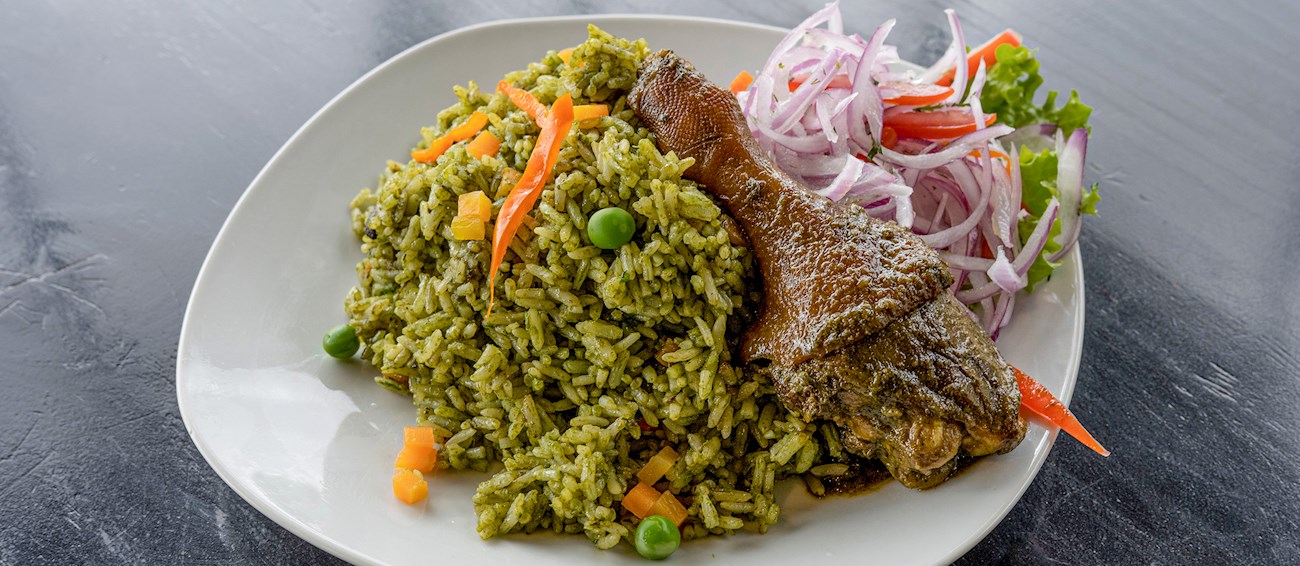Arroz con pato a la chiclayana (also known as arroz con pato de lambayeque) is a traditional dish originating from the city of Chiclayo. It's usually made with a combination of duck meat, oil, garlic, onions, rice, peas, pumpkin (squash), red peppers, scallions, aji limo peppers, lime juice, and salt.
The garlic, onions, and squash are cooked in oil, then combined with the browned duck meat and water. Once the duck becomes tender it's taken out and the rice, peas, pepper, and coriander are simmered in the cooking liquid. Once cooked, the rice mixture is seasoned with lime juice and served alongside duck meat.
MOST ICONIC Arroz con pato a la chiclayana
View moreMAIN INGREDIENTS
Arroz con pato is a classic Peruvian duck and rice dish, particularly popular in northern cities like Trujillo and Chiclayo. This dish combines seasoned duck meat cooked with rice, which absorbs the rich and flavorful juices from the duck and various seasonings.
To prepare it, the duck is first marinated with a mix of garlic, pepper, cumin, and often beer or chicha de jora. After marinating, the duck pieces are browned in a pan. In another pan, a base or "sofrito" of garlic, onion, aji amarillo (yellow Peruvian chili pepper), and bell peppers is prepared.
MOST ICONIC Arroz con pato
View moreJuane is a traditional meal originating from the Peruvian jungles, consisting of chicken, hard-boiled eggs, and rice seasoned with spices that might include turmeric, oregano, and cumin. The combination of these ingredients is wrapped in waxy bijao leaves (which look like banana leaves) and cooked.
It is common to pair the dish with cassava or boiled bananas. Juanes can be found in traditional restaurants, in markets, or at street vendors. The name juane refers to St. John the Baptist, because the dish is traditionally eaten on the 24th of June, during the feast of San Juan (patron saint of the Amazon).
TasteAtlas food rankings are based on the ratings of the TasteAtlas audience, with a series of mechanisms that recognize real users and that ignore bot, nationalist or local patriotic ratings, and give additional value to the ratings of users that the system recognizes as knowledgeable. For the “3 Worst Rated Peruvian Rice Dishes” list until April 19, 2025, 1,089 ratings were recorded, of which 369 were recognized by the system as legitimate. TasteAtlas Rankings should not be seen as the final global conclusion about food. Their purpose is to promote excellent local foods, instill pride in traditional dishes, and arouse curiosity about dishes you haven’t tried.












